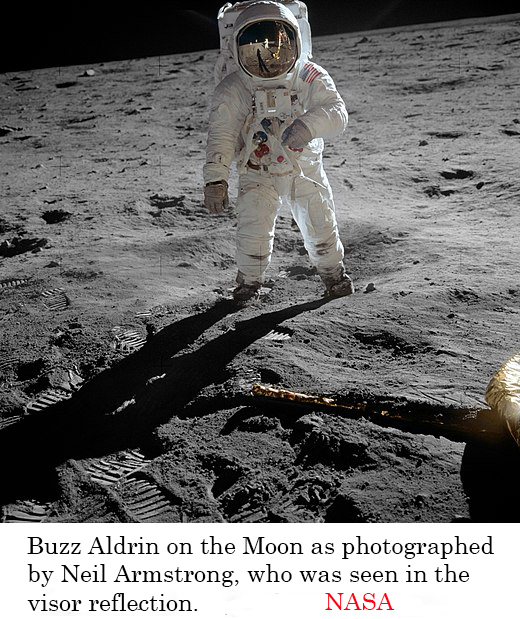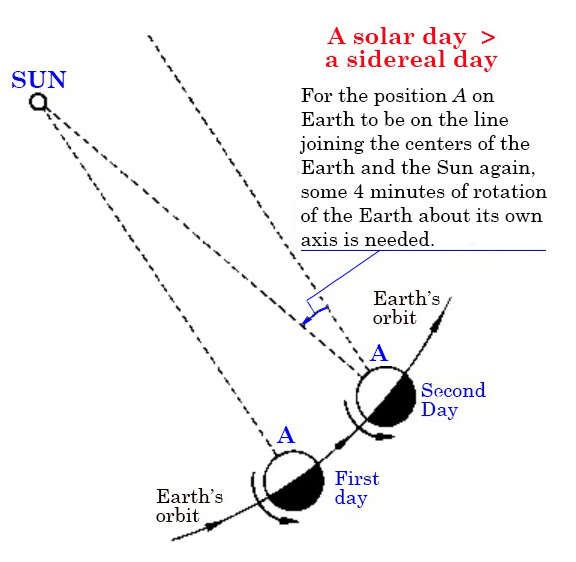
Ing-Chang Jong, Ph.D., P.E. E-mail: icjong@uark.edu |

|
 |
1. The Blue Marble (a photo capturing an entire sunlit surface of the Earth in full disc) was shot by the United States' Apollo 17 astronauts enroute to the Moon. Launched on December 7, 1972, Apollo 17 was NASA's last crewed mission to land on the Moon during the 20th century. The launching of Artemis 1 to the Moon on November 16, 2022, represented the start of U.S. crewed missions to study the use of the Moon as a base to explore the planet Mars and others in the 21st century. <p> 2. Launched at 8:32 AM, GMT-5, July 16, 1969, from Kennedy Space Center in Florida, the U.S. Apollo 11, with Lunar Module (LM) "Eagle," was NASA's first crewed mission to land on the Moon. Pilot of the Command Module was Michael Collins. The LM spacecraft, launched from the Command Module, landed at 20:17 UTC, July 20, 1969, in a preselected region of the Moon, known as Mare Tranquillitatis (Latin for Sea of Tranquility). The LM carried two astronauts: Commander Neil A. Armstrong and LM pilot Edwin E. "Buzz" Aldrin, Jr.; they were the first humans to walk on the Moon. There had been six crewed U.S. landings on the Moon between 1969 and 1972, and numerous uncrewed landings from August 22, 1976 to December 14, 2013. <p>
3. Geostationary satellites play important instrumental roles in modern global telecommunications and weather forecast. They are launched from the surface of the Earth or from space ships and then placed in a big circular orbit to coast (free flight) at an altitude of ca. 22,236 miles directly above the equator of the Earth to become geosynchronous with the Earth. A solar day is the amount of time (about 24 hours) needed for the Earth to spin one complete rotation about its own axis with respect to the Sun. Meanwhile, the axis pointing from the south to the north poles of the Earth is tilted 23.5 degrees away from the line perpendicular to the plane of the Earth's orbit around the Sun. The period of orbit of a geostationary satellite, which coasts in curvilinear translation relative to the Sun one round along that big circular orbit above the equator of the Earth, is a sidereal day (about 23 hours, 56 minutes, and 4 seconds). Of course, all Geostationary satellites are designed and set to take one sidereal day in coasting along the aforementioned big circular orbit above the equator of the Earth in each lap of translational curvilinear motion around the Earth's own axis with respect to other faraway constellation or "fixed" stars (except the fixed Sun), which serve as the inertial reference frame in the study of central-force motion in space mechanics. A solar day is some 4 minutes longer than a sidereal day because the Earth revolves counterclockwise around the Sun, in addition to rotating counterclockwise (from west to east) about its own axis at the same time. (See the sketch below, where point A is a fixed location of the observer on the surface of the Earth.) <p>
4. The dominant forces acting on geostationary satellites are the
gravitational attractive forces exerted by the Earth. These satellites are
like small objects captured by the Earth as its small satellites.
As mentioned earlier, each
geostationary satellite coasts along that big
circular orbit
(which has a height of some 22,236 miles directly above
the equator of the Earth as calculated via space mechanics).
The "time needed" for each geostationary satellite to
complete one revolution along that big circular orbit above
the equator around the Earth is the same as the "time needed"
for the Earth to complete one counterclockwise spinning rotation about
the axis pointing from the south pole toward the north pole
with respect to other
faraway "fixed" stars
(except the fixed Sun) or
constellation.
Both of the said times needed are each equal to one sidereal day.
It is achieved via using Newton's law of gravitation and
central-force motion in space mechanics as well as the
launching with control-system in modern technology. Hence, geostationary satellites are
designed and made to be synchronous
with the spinnig rotation of the Earth about its own axsis
passing from the south through the north poles. Therefore, geostationary satellites
do appear to be
"parked" at intended spots in the sky of the Earth at all times!
(Cf.
Newton's Law of Gravitation and
Central-Force Motion
in the course MEEG 2013 DYNAMICS at the University of
Arkansas.) <p>
|


